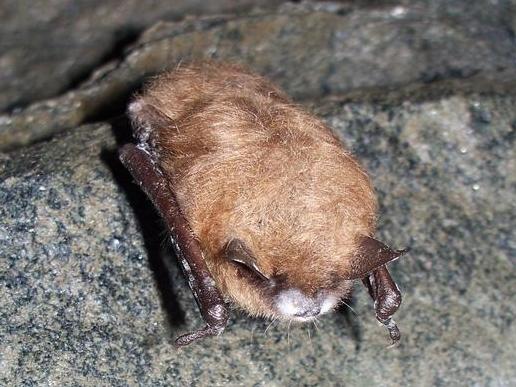Although they are rarely seen, bats play an important role in ecosystems and thus also for humans. During their nightly foraging trips, they consume vast quantities of insects, pollinate plants and disperse seeds by feeding on fruit. There are about 1,200 species worldwide; every fifth mammalian species is a bat!
However, it has recently been established that bats can also pose a threat: They are suspected to transmit various viral diseases. The spread of so-called zoonoses – diseases which can affect both humans and animals – has previously mainly been attributed to rodents, but it may also apply to bats. The spread of rabies by hematophagous vampire bats in Latin America has been known to be a problem for some time. Certain European insectivorous bats are suspected to be reservoir hosts for rabies as well. However, it is unlikely to encounter a rabid bat in Germany, and vaccination and appropriate behavior can protect against an infection. But for the tropics, especially Africa and Asia, researchers were able to verify viruses hazardous to humans. Among these were henipaviruses that are known to be prevalent in Asian flying foxes.
Bat researchers and infection biologists are increasingly grappling with the question of why bats are so prone to diseases. For the first time, the Leibniz Institute for Zoo and Wildlife Research in Berlin invited experts from all over the world to an open discourse on this topic, which they subsequently reported on in the renowned scientific journal Biology Letters. Dr. Christian Voigt, one of the conference’s organizers, listed several factors that make bats appear ideal as a reservoir for infectious diseases. Despite their small size,“ the biologist pointed out, “bats have an extremely long life span. Bats can get as old as 20 to 30 years.“ With such a life span, they can thus accumulate disease agents during a comparatively long time frame. In addition, bats are very social: Some species feed each other, while others hang closely together in caves, in colonies comprising millions of individuals. Naturally, this increases the transmission rate of agents“ Dr.Voigt added. In the tropics, bats feed on fruits that are sometimes contaminated with feces from other bats; fruits that have been nibbled on by them are also occasionally consumed by humans. In some tropical countries, bats even end up in the saucepan from time to time, opening the floodgates for the transmission of diseases. What almost no one knows is that some bat species are highly mobile. Not only do they fly around within a very limited radius; but similar to migratory birds, they can travel hundreds or even thousands of kilometers, thereby potentially distributing pathogens across great distances. And finally, bats are mammals – hence their immune system is more similar to that of humans, as opposed to that of birds. Consequently, pathogens specific to bats can be transmitted more easily to humans.
But bats themselves are also severely threatened by infectious diseases. In North America, a fungal disease has been killing millions of animals in the past few years. The white-nose syndrome (WNS), in which a white fungal growth forms on the nose of the animals, infests entire populations during their hibernation in caves, when the animals’ defenses are weakest. The researchers do not yet know why the fungus is striking just now. They only know that it favors a cold climate, preferring temperatures around 15 degrees Celsius. The researchers are now investigating whether European bats face a similar threat of mass mortalities. It does not look that way so far, although the fungus has been confirmed for a single bat in France. “But the affected animal did not die, and the fungus has not spread endemically“ Dr. Voigt said, summarizing the observations. Researchers speculate that the fungus might even have originated in Europe and that European bats might have developed defense mechanisms over the course of thousands of years. Spread by spores carried by humans, it might have hit the American bats completely unprepared. For North America, this poses an ecological disaster.
Precisely because bats can pose a public health problem, research into how they live has the highest priority. But the protection of bats is also extremely important. If they could no longer perform their function as insect consumers, researchers postulate an explosive increase in agricultural parasites or infectious mosquitoes, with unforeseen indirect consequences for humans. In those cases where tropical bats are important pollinators of agriculturally relevant plants or trees, many plant species and thus entire ecosystems would be threatened. Consequently, the aim cannot be to exterminate bats or to ban them from our environment, but to find ways of co-existence. Dr. Voigt is convinced that “even if bats are potential reservoirs for infectious diseases, our problems would be much worse if bats were to disappear from our environment.“
Doi: 10.1098/rsbl.2010.0267
| Contact: PD Dr. Christian Voigt, Leibniz Institute for Zoo and Wildlife Research, Phone:+49( 0)30 5168 517, voigt@izw-berlin.de |


